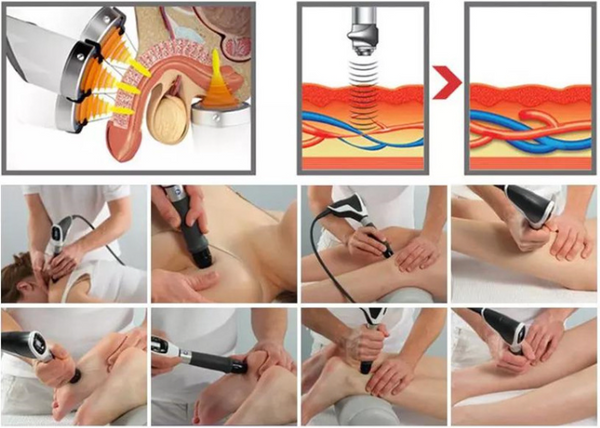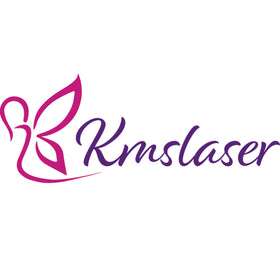Are you looking for an effective way to reduce inflammation and help your clients get the relief they need? Shockwave therapy may be worth considering. It has been used in medical practice for many years, first to break down kidney stones and more recently as a treatment for musculoskeletal pain. This non-invasive technique is now being utilized in beauty #salons, #spas, #clinics—and even at home — for its potential anti-inflammatory benefits . Not only can shockwave therapy provide temporary relief from acute inflammation episodes such as tendonitis or bursitis, but it could also potentially reduce long-term chronic swelling associated with arthritis and other joint diseases. In this blog post we’ll explore how shockwave therapy works and just how helpful (or not) it really is for inflammatory conditions.
What is shockwave therapy and how does it work
If you're dealing with chronic pain or a slow-healing injury, you might be on the hunt for a more effective treatment option. That's where #shockwave therapy comes in. This non-invasive technique involves using specialized equipment to deliver high-energy acoustic waves to the affected area. These waves penetrate deep into the tissues, stimulating blood flow and triggering your body's natural healing response. With shockwave therapy, you can often see results after just a few sessions, making it an attractive option for those looking for quick relief. Plus, since it doesn't require any surgery or medications, it's also a low-risk treatment option. Give shockwave therapy a try and see if it could be the solution to your chronic pain or injury.

Benefits of shockwave therapy for inflammation
Inflammation can be a real pain, both figuratively and literally. It is a common symptom associated with many different conditions and can sometimes be difficult to treat. One therapeutic option that has shown promising results is shockwave therapy. This non-invasive procedure delivers high-energy sound waves to the affected areas, stimulating blood flow and promoting the body's natural healing process. #Shockwavetherapy has been found to effectively reduce pain and inflammation in many instances, including plantar fasciitis, tendinitis, and even cellulite. Patients have reported feeling relieved after just a few sessions. If you're struggling with inflammation , shockwave therapy may be a solution worth exploring.

Potential risks of shockwave therapy
Shockwave therapy is a non-invasive treatment that has been used to successfully treat a variety of conditions. It involves directing high-energy acoustic waves to the affected area to stimulate healing. However, like any medical treatment, it comes with potential risks. Some patients may experience mild pain, swelling, or bruising after treatment. In rare cases, there may be more serious side effects, such as nerve damage or tissue damage. It is important to discuss the potential risks with your healthcare provider and weigh them against the potential benefits before deciding to undergo shockwave therapy.
Types of conditions that can be treated using shockwave therapy
Did you know that shockwave therapy can be used to treat a variety of conditions? This innovative treatment method uses high-intensity sound waves to target problem areas in the body. It's most commonly used for conditions such as plantar fasciitis, Achilles tendonitis, and tennis elbow, but can also be effective for other musculoskeletal issues like shoulder pain, hip pain, and even chronic back pain. The therapy works by stimulating the body's natural healing process, reducing inflammation, and promoting the growth of new tissue. Plus, it's non-invasive and requires no downtime, making it an attractive option for those looking to avoid surgery. If you're dealing with a stubborn injury, it may be worth discussing the potential benefits of shockwave therapy with your healthcare provider.#physicalequipments
How long does a typical treatment last and what is the recovery time
When seeking medical treatment, one of the most common questions patients have is how long it will take to see results and recover. The answer can vary depending on the type and severity of the condition being treated. In general, a typical treatment can last anywhere from a few weeks to a few months. The recovery time can also vary greatly, with some patients experiencing immediate relief while others may require ongoing care and rehabilitation.The important thing is to work closely with your healthcare provider to develop a personalized treatment plan that addresses your individual needs and goals. By staying committed to the process and following your doctor's recommendations, you can help ensure the best possible outcome and the shortest possible recovery time.#erectiledysfunctiontreatment
Alternatives to shockwave therapy for treating inflammation
Inflammation can be a major source of pain and discomfort, but fortunately there are a variety of treatment options available. One alternative to shockwave therapy is cold therapy, which involves using cold temperatures to reduce swelling and inflammation. Another option is #physical therapy, which may include techniques like massage , stretching , and strength training to reduce inflammation and promote healing. Some natural remedies such as turmeric, ginger, and omega-3 fatty acids have been shown to have anti-inflammatory properties as well. While shockwave therapy can be effective, these alternative treatments can provide relief without the potential side effects and risks associated with more invasive procedures.#shockwaveforED
In conclusion , shockwave therapy is a valid and viable option for reducing inflammation and managing a variety of health conditions. Despite its varying success rate, the therapy does come with some risks, so it is important to consult your primary provider before making any decisions. It is also worth considering other options if needed- like massages,#physicaltherapy, anti-inflammatories and dietary supplements -as part of an overall treatment plan.Shockwave therapy can be relatively easy to perform, depending on the affected area and type of device used. A typical session usually lasts between 5-30 minutes with recovery time varying from individual to individual . Shockwave therapy can be extremely beneficial in reducing joint pain and discomfort as well as treating many other muscular and skeletal issues.
To learn more about this machine, please feel free to contact us!

